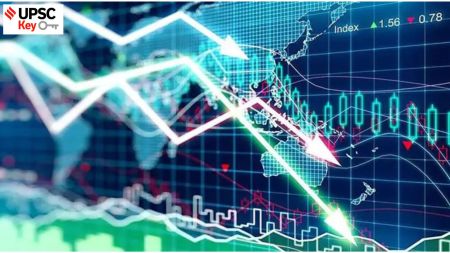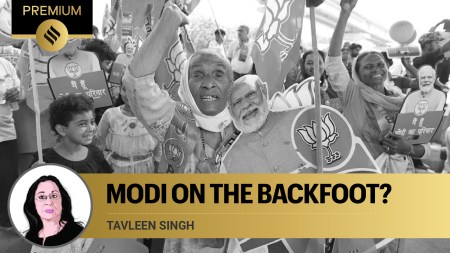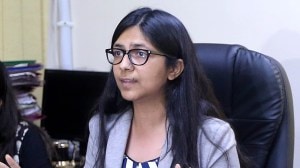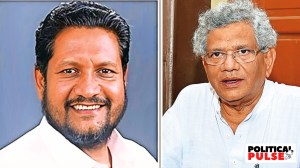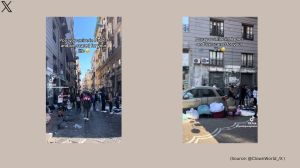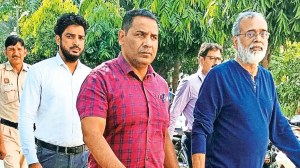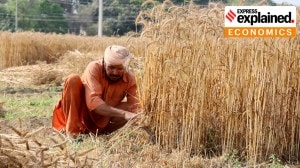- India
- International
UPSC Key | 2nd May, 2024 — Article 31C, Fertilisers, SMART system and more
Exclusive for Subscribers from Monday to Friday: How are Article 31C, and Fertilisers relevant to the UPSC Exam? What significance do topics like Air pollution and Manipur have for the preliminary and main exams? You can learn more by reading the Indian Express UPSC Key for May 2nd, 2024.
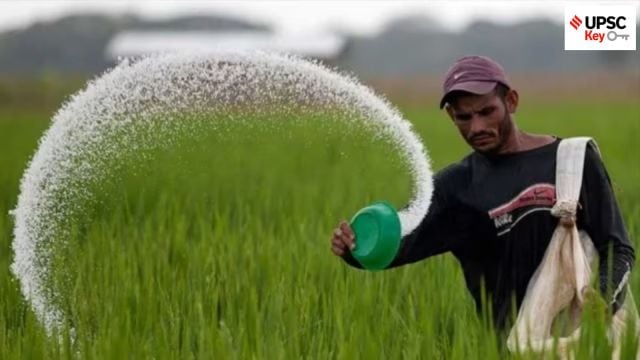 The government merely pays a fixed per-tonne subsidy on each of these fertilisers, linked to their nutrient content or specific percentage of nitrogen (N), phosphorous (P), potassium (K) and sulphur (S). Know more in our UPSC Key.
The government merely pays a fixed per-tonne subsidy on each of these fertilisers, linked to their nutrient content or specific percentage of nitrogen (N), phosphorous (P), potassium (K) and sulphur (S). Know more in our UPSC Key.Important topics and their relevance in UPSC CSE exam for May 2, 2024. If you missed the May 1st, 2024 UPSC CSE exam key from the Indian Express, read it here.
🚨 The Indian Express UPSC Essentials brings to you the April edition of its monthly magazine. Click Here to read. Share your views and suggestions in the comment box or at manas.srivastava@indianexpress.com🚨
Explained
The question of Article 31C
Syllabus:
Preliminary Examination: Current events of national and international importance, IndianPolity and Governance- Constitution, Rights Issues.
Mains Examination: GS-II: Constitution of India —historical underpinnings, evolution, features, amendments, significant provisions and basic structure.
What’s the ongoing story- During the ongoing hearing in the Supreme Court to decide whether the government can acquire and redistribute private property, a nine-judge Constitution Bench led by Chief Justice of India D Y Chandrachud asked a question of “radical constitutional consequence”: Does Article 31C still exist?
Prerequisites:

— What is the Directive Principles of State Policy (DPSP)? What’s the difference between DPSPs and Fundamental Rights?
— What are the constitutional provisions of Articles 14, 19, 31(c), 39(b), and 39(c)?
— What is the “Basic Structure” Doctrine?
Key takeaways:
— Article 31C protects laws enacted to ensure the “material resources of the community” are distributed to serve the common good (Article 39(b)) and that wealth and the means of production are not “concentrated” to the “common detriment” (Article 39(c)).
— Article 39 of the Constitution lists certain directive principles of state policy, which are meant to be guiding principles for the enactment of laws, but are not directly enforceable in any court of law.
— As per Article 31C, these particular directive principles (Articles 39(b) and 39(c)) cannot be challenged by invoking the right to equality (Article 14) or the rights under Article 19 (freedom of speech, right to assemble peacefully, etc).
— Article 31C was introduced by The Constitution (Twenty-fifth) Amendment Act, 1971.
— The 25th amendment was challenged in the seminal Kesavananda Bharati case (1973) in which 13 judges held by a narrow 7-6 majority that the Constitution has a “basic structure” that cannot be altered, even by a constitutional amendment.
— As a part of this verdict, the court struck down the last portion of Article 31C, i.e., the part that states “…and no law containing a declaration that it is for giving effect to such policy shall be called in question in any court on the ground that it does not give effect to such policy”.
— In 1976, Parliament enacted The Constitution (Forty-second) Amendment Act, which expanded the protection under Article 31C to “all or any of the principles laid down in Part IV of the Constitution”, under clause 4. As a result, every single directive principle (Articles 36-51) was protected from challenges under Articles 14 and 19 of the Constitution.
— In 1980, in its judgment in Minerva Mills v. Union of India, the SC struck down clauses 4 and 5 of the amendment. The five-judge Bench held that Parliament’s power to amend the Constitution was limited, and it could not be used to remove these limitations and grant itself “unlimited” and “absolute” powers of amendment.
Points to Ponder:
— What are the various ideological principles of DPSP?
— How Article 31(c) is related to DPSP?
— Is the Right to Property considered a Fundamental Right?
— What are the different land reforms that were introduced by the various states in India after achieving independence?
— How Article 39(c) is connected to the property owner’s Right to Equality under Article 14?
Post Read Question:
What is the position of the Right to Property in India? (2021)
(a) Legal right available to citizens only
(b) Legal right available to any person
(c) Fundamental Right available to citizens only
(d) Neither Fundamental Right nor legal right
Other Important Articles Covering the same topic:
Dangerous to suggest material resources of community don’t cover pvt property: Supreme Court
Case before SC: Can Govt redistribute privately owned property?
The challenge and necessity of ‘balanced’ in use of fertilisers
Syllabus:
Preliminary Examination: Economy and General issues on Environmental Ecology, Biodiversity and Climate Change – that do not require subject specialisation.
Mains Examination: GS-III: Agriculture and issues related to direct and indirect farm subsidies and minimum support prices.
What’s the ongoing story- The fiscal ended March 2024 saw urea consumption hit a record 35.8 million tonnes (mt), 16.9% higher than the 30.6 mt in 2013-14, the year before the Narendra Modi government came to power.
Prerequisites:
— What is the necessity of fertilisers?
— What is neem coated urea?
— What is the nutrient-based subsidy (NBS) system?
— Significance of Nitrogen, Phosphorus, calcium, magnesium, and Potassium for crops
Key takeaways:
— Balanced fertilisation — discouraging farmers from applying too much urea, di-ammonium phosphate (DAP) or muriate of potash (MOP), which only have primary nutrients in high concentrations — is likely to be a key policy goal for the government taking over after the Lok Sabha elections.
— Balanced fertilisation means supplying these primary (N, phosphorus-P and potassium-K), secondary (sulphur-S, calcium, magnesium) and micro (iron, zinc, copper, manganese, boron, molybdenum) nutrients in the right proportion, based on soil type and the crop’s own requirement at different growth stages.
— The nutrient-based subsidy (NBS) system, instituted in April 2010 by the previous United Progressive Alliance (UPA) government, was expected to promote balanced fertilisation. Here subsidy was linked to nutrient content.
— NBS achieved its objective initially. But NBS failed simply because it excluded urea.
— The last couple of years have seen even non-urea fertilisers being brought under price control. An immediate challenge that arises is to ensure a proper “price hierarchy” among non-urea fertilisers.
— That would mean pricing DAP the highest, MOP the lowest and complexes in between. DAP use should be restricted mainly to rice and wheat. Other crops can meet their P requirement through complexes and SSP.
— India is heavily import-dependent in fertilisers, be it of finished products or intermediates and raw materials. High global prices add to the country’s foreign exchange outgo and also the government’s subsidy burden.
— There is a dip in fertiliser prices due to geopolitical reasons.
— Opportunity for India: The cooling of international prices, nevertheless, gives some flexibility for the next government to rationalise MRPs of fertilisers and promote balanced plant nutrition. This could involve bringing urea under NBS and mitigating the impact of a significant hike in its MRP by increasing the subsidy rates on other nutrients.
For Your Information:
— In January the government has brought di-ammonium phosphate (DAP), muriate of potash (MOP) and all other such fertilisers that receive nutrient-based subsidy (NBS) support under “reasonable pricing” controls.
— There are two concerns over rising urea consumption. The first is imports, which accounted for 7.6 mt out of the total 35.7 mt sold last fiscal.
— The second concern is NUE. Barely 35% of the N applied through urea in India is actually utilised by crops to produce harvested yields. The balance 65% N is unavailable to the plants, much of it “lost” through release into the atmosphere as ammonia gas or leaching below the ground after conversion into nitrate.
Points to Ponder:
— What harm can excessive use of urea and now di-ammonium phosphate, or DAP, do to a farmer?
— Significance of neem-coated urea
— What is the impact of imbalanced fertilisers?
— What steps need to be taken to address the issue of overuse of urea?
Post Read Question:
Why does the Government of India promote the use of ‘Neem-coated Urea’ in agriculture? (2016)
(a) Release of Neem oil in the soil increases nitrogen fixation by the soil microorganisms
(b) Neem coating slows down the rate of dissolution of urea in the soil
(c) Nitrous oxide, which is a greenhouse gas, is not at all released into atmosphere by crop fields
(d) It is a combination of a weedicide and a fertilizer for particular crops
Other Important Articles Covering the same topic:
How to make Urea more efficient as a fertiliser, and why that’s needed
Govt brings non-urea fertilisers under price control, fixes profit margins
Why is China more important for Tesla than India?
Syllabus:
Preliminary Examination: Current events of national and international importance
Mains Examination: GS-II, III: Government policies and interventions for development in various sectors, Achievements of Indians in science & technology.
What’s the ongoing story- Within a week of postponing his much-anticipated visit to India, Tesla CEO Elon Musk landed in Beijing to push for Full Self-Driving (FSD), underscoring the importance of China in the global supply chain for the world’s most valuable electric vehicle maker.
Prerequisites:
— What is an Electric Vehicle (EV)?
— What are the Production-linked incentives (PIL)?
— Significance of lithium
Key takeaways:
— China accounts for over half of the global electric vehicle (EV) sales, largely driven by its near dominance in battery production — a critical element for EV manufacturing.
— Tesla opened its biggest manufacturing unit in Shanghai in 2018 after a new Chinese policy allowed foreign carmakers to establish fully-owned subsidiaries in the country.
— A global shift from internal combustion engine (ICE) vehicles to EVs presents a massive opportunity for new entrants like India, vying to be a part of the global supply chain. However, India has a fragmented EV supply chain.
— According to a Niti Ayog report, the biggest demand for lithium-ion batteries (LIBs) comes from consumer electronics such as laptops, mobile phones, and tablets.
— Taking note of the booming demand for batteries, India is pushing for battery production through the production-linked incentive (PLI) scheme for advanced chemistry cell (ACC) battery storage. — ACC is a crucial component of lithium-ion batteries. Niti Ayog says that India is well-positioned to capture a large share of the growing global market and could represent up to 13% of global battery demand by 2030.
— Regulatory flip-flops on India’s EV policy: In 2018-19, the Centre had increased customs duty on CKD (completely knocked down) imports of motor vehicles, motor cars, motorcycles from 10% to 15%, much to the ire of global automakers.
— Despite China’s dominance over the EV supply chain, its exports are increasingly coming under scrutiny in Europe and the US, presenting an opportunity for India.
For Your Information:
—- A World Bank analysis found that investing in charging infrastructure is 4-7 times more effective in EV adoption than providing upfront purchase subsidies.
— In several countries that have pushed EVs, much of the electricity is generated from renewables — Norway has 99% hydroelectric power. In India, the grid is still fed largely by coal-fired thermal plants.
— More than 90% of the global Li production is concentrated in Chile, Argentina, and Bolivia alongside Australia and China, and other key inputs such as cobalt and nickel are mined in the Congo and Indonesia — India would, therefore, be almost entirely dependent on imports from a small pool of countries to cater to its demand.
Do you know?
— India has been inducted into the Mineral Security Partnership (MSP), a US-led collaboration of 14 countries that aims to catalyse public and private investment in critical mineral supply chains globally.
— It will help India in the mobility space through the conversion of a large part of public and private transport to electric vehicles
Points to Ponder:
— What India needs to do to strengthen its EV supply chain?
— How push for EVs will help India to achieve its net-zero emission target?
— Need to invest in EV charging infrastructure
— India’s collaboration with other nations for Critical Minerals
Post Read Question:
How is efficient and affordable urban mass transport key to the rapid economic development in India? (2019)
Other Important Articles Covering the same topic:
The problem with battery electric vehicles
Booker slavery links: Behind the criticism of the prestigious literary prize
Syllabus:
Preliminary Examination: Current events of national and international importance
Mains Examination: GS-I: History of the world
What’s the ongoing story- The Booker Prize, one of the most prestigious awards in the literary world, has recently come under fire for the historical links to slavery of its original sponsor, Booker Group.
Last week, BBC Radio host Richie Brave posted on X about a page on the Booker website which said that in the early 1800s, the company founders — brothers George and Josias Booker — “managed nearly 200 enslaved people”.
Prerequisites:
— What is slavery?
— Who are indentured labourers?
— What is the British Black Panther Movement?
— What is the sugar and cotton plantation?
— Location of Suriname, Guyana and Trinidad
Key takeaways:
— The Booker Prize was founded in 1969, initially just for writers from the Commonwealth, but later opened to writers globally. Each year, the prize is awarded to a single work of fiction in the English language. In 2004, a separate International Booker Prize was instituted for translated works.
— In 1815, the Congress of Vienna divided the northeastern coast of South America among three European Powers. The Dutch got modern-day Suriname, France got French Guiana (still a French overseas territory), and Britain got what is now known as Guyana.
— Scores of entrepreneurial European men — like the Booker brothers — headed to these colonies to make a quick fortune.
— The economy of British Guyana was largely driven by the sugar and (to a lesser degree) cotton industries, with African slaves providing the necessary labour in plantations. The Booker brothers were very much a part of this exploitative slave-based economy.
— When slavery was abolished in Guyana in 1834, the Booker brothers received compensation from the state for 52 emancipated slaves.
— After slavery was abolished in Guyana, the Bookers decided to replace it with indentured labourers from India. This system lasted until about the 1920s. Today, the people of Indian origin constitute the largest ethnic group in Guyana.
Points to Ponder:
— What is Modern Slavery?
— How slavery had impacted the current economic condition in the Caribbean?
— How British economy benefit from indentured labourers and slavery?
— Should there be reparations for slavery?
Post Read Question:
Evaluate the historical and socio-economic impact of slavery on affected nations.
Other Important Articles Covering the same topic:
How Britain, its royalty profited from slave trade
The Editorial Page
The trade push
Syllabus:
Preliminary Examination: Economic and Social Development
Mains Examination: GS-III: Indian Economy and issues relating to planning, mobilisation, of resources, growth, development and employment.
What’s the ongoing story- Dharmakirti Joshi , Adhish Verma, and Meera Mohan write: Over the past few years, global trade has been very volatile, first on account of the Covid-19 pandemic and then due to geopolitical conflicts. Since the middle of 2022, the value of global merchandise trade has shrunk continuously as per data from the United Nations Conference on Trade and Development.
Prerequisites:
— What is the International Commodity Price?
— What is the Production Linked Incentive Scheme?
— What are the labour-intensive sectors?
Key takeaways:
— “India’s performance has been largely in line, with merchandise exports falling 4.7 per cent in 2023. This, however, was better than developing Asia as a whole, which saw merchandise exports decline by 6.8 per cent.”
— “Besides an uncertain global environment, India has also had to deal with lower international commodity prices, which have reduced its export bill measured in dollars.”
— “Excluding petroleum and gems and jewellery exports, core exports were up 1.4 per cent, despite the broad-based decline in international commodity prices. This indicates that India was able to ship a higher volume of goods.”
— “The impressive 24 per cent growth in electronics goods exports last year reflects surging exports of telecom instruments or mobile handsets, spurred by the Production Linked Incentive scheme.”
— “Other large core categories such as drugs and pharmaceuticals, engineering goods and agricultural goods also saw healthy export growth.”
— “In terms of the country of destination, oddly, goods exports to the US contracted in 2023-24 as its growth was largely led by the services sector.”
— “India’s exports to the Gulf Cooperation Council (GCC) countries also rose, reflecting a further increase in exports to the UAE — the largest export destination of Indian goods in the GCC region.”
— “However, it is a matter of concern that exports of labour-intensive sectors such as gems and jewellery, textile products (largely ready-made garments), leather and leather products, marine products and plastics, declined last year.”
— “Bilateral free-trade agreements with major economies and the ongoing push to manufacturing should spur India’s exports in the near to medium term. In the base-case scenario, exports should grow at a healthy rate and contribute to the overall growth momentum.”
For Your Information:
— According to the World Bank’s latest Commodity Markets Outlook, the conflict in West Asia, which comes on top of disruptions caused by the Russian invasion of Ukraine, has resulted in limited impact on commodity prices but could bring “dual shock” to commodity markets as energy market turmoil could intensify food insecurity.
— The World Bank said developing countries should avoid trade restrictions such as export bans on food and fertilisers. The ban on exports of non-basmati rice by India has “roiled global markets since mid-July.”
Points to Ponder:
— Impact of global geopolitics on international commodity prices
— What steps need to be taken by the government to increase the export of labour-intensive sectors?
— Why has India banned the export of basmati rice?
Post Read Question:
How does the decline of export from the labour-intensive sector impact a populous nation like India?
Other Important Articles Covering the same topic:
West Asian conflict could trigger ‘dual shock’ to global commodity markets: World Bank
A Healing Touch
Syllabus:
Preliminary Examination: Current events of national and international importance
Mains Examination: GS-II, III: Governance, Internal Security
What’s the ongoing story- A year after it was jolted by ethnic violence, Manipur continues to be on the edge. The state has not seen large-scale violence in the last eight months. However, lives continue to be lost in clashes between Meiteis and Kuki-Zomis.
Prerequisites:
— Who are Meities?
— Who are Kuki-Zomis?
— What are the reasons for Insurgency in Manipur?
Key takeaways:
— The scars created by the conflict are admittedly deep – more than 200 people have lost their lives, families languish in refugee camps and there have been reports of gruesome violence against women.
— Vigilante groups continue to take the law into their own hands. But great harm has also been done by the state government’s lack of will to initiate a meaningful dialogue between the warring communities.
For Your Information:

— The violence began in the state over the issue of the inclusion of the Meitei community in the list of the state’s Scheduled Tribes (ST).
— The Meiteis are the largest community in Manipur. There are 34 recognized tribes, which are broadly classified as ‘Any Kuki Tribes’ and ‘Any Naga Tribes’.
— The central valley in the state accounts for about 10% of the landmass of Manipur, and is home primarily to the Meitei and Meitei Pangals who constitute roughly 64.6% of the state’s population.
— The remaining 90% of the state’s geographical area comprises hills surrounding the valley, which are home to the recognized tribes, making up about 35.4% of the state’s population.
Points to Ponder:
— Why tribal groups are opposing ST status in the Meitei community in Manipur?
— What NGOs and Civil bodies can do to develop trust among the tribal communities?
— Role of security forces in violence-affected area
— Failure of the government to address the issues
— What is Justice Gita Mittal Committee?
— Humanitarian crisis in Manipur
(Thought Process: Women and girls pay a higher price in case of ethical violence and war–two women from the Kuki-Zomi community being paraded naked and sexually assaulted in Manipur—Video was made and circulated—lack of human values)
Post Read Question:
Prelims
Justice Gita Mittal Committee was constituted for which purpose?
(a) Prison Reform
(b) Manipur Violence
(c) Railway restructuring
(d) Monetary Reform
Mains
What are the reasons for ongoing conflict in Manipur? What steps need to be taken to address the grievances of all the stakeholders and restore peace and harmony in the northeastern region?
Other Important Articles Covering the same topic:
Manipur’s ethnic faultlines: Kuki-Meitei divide & recent unrest
Syllabus:
Preliminary Examination: General issues on Environmental ecology, Bio-diversity and Climate Change.
Mains Examination: GS-III: Conservation, environmental pollution and degradation, environmental impact assessment.
What’s the ongoing story- For 23 days in April, the residents of Delhi breathed less noxious air than they do the rest of the year. On these days, the air quality index (AQI) was below 201 — compared to 17 days during the same period in 2023, none in 2022, 18 in 2021, 12 in 2019 and eight in 2018.
Prerequisites:
—- What is La Nina?
— What is the odd-even scheme?
— What is the role of the Commission of Air Quality Management (CAQM)?
Key takeaways:
— According to the Commission for Air Quality Management (CAQM), the improvement can be attributed to “favourable meteorological/weather conditions coupled with consistent, comprehensive, concerted efforts” to control air pollution in the national capital region.
— There are no shortcuts to reduce air pollution. Occasionally, meteorological or external conditions reduce or sharpen the impact of pollution — like this April, or when a record-breaking La Nina event in the Pacific Ocean led to cleaner-than-usual air in the winter of 2022.
— Emergency actions, like the highly publicised odd-even scheme and construction bans, cannot address what is patently a problem in need of a long-term strategy.
— Delhi’s air pollution may not always be as visible as it is during the winter months, but any plan to tackle it must be designed with short-, medium- and long-term measures.
For Your Information:
— India’s National Clean Air Programme (NCAP) was launched in 2019 to achieve a 20-30 per cent reduction in concentrations of PM10 and PM2.5 by 2024 (base year, 2017).
—It encompasses a wide range of specific interventions including reduction of vehicular pollution through regulatory norms, promotion of public transport and improvements in roads and bridges; tackling industrial emissions; notification of eight waste management rules; monitoring of ambient air quality; and prevention and control of paddy stubble burning.
Points to Ponder:
— What are the reasons for air pollution in Delhi?
— What is a Graded Response Action Plan (GRAP)?
— Role of National Green Tribunal (NGT)
— PM 2.5 and PM 10 levels
Post Read Question:
Prelims
In the context of WHO Air Quality Guidelines, consider the following statements: (2022)
- The 24-hour mean of PM2.5 should not exceed 15 ug/m³ and annual mean of PM 2.5 should not exceed 5 µg/m³.
- In a year, the highest levels of ozone pollution occur during the periods of inclement weather.
- PM10 can penetrate the lung barrier and enter the bloodstream.
- Excessive ozone in the air can trigger asthma.
Which of the statements given above are correct?
(a) 1, 3 and 4
(b) 1 and 4 only
(c) 2, 3 and 4
(d) 1 and 2 only
Mains
What are the main causes of air pollution in India? Critically analyse the steps taken by the government to tackle it.
Other Important Articles Covering the same topic:
Delhi used only 28% of funds allotted under clean air programme: Report
Express Network
DRDO successfully tests missile-assisted torpedo release system
Syllabus:
Preliminary Examination: Current events of national and international importance.
Mains Examination: GS-II: Defence Technology and Security.
What’s the ongoing story- The Defence Research and Development Organisation (DRDO) Wednesday tested a next-generation torpedo release system aimed at boosting the Navy’s anti-submarine warfare capabilities, the Defence Ministry said.
Prerequisites:
— What is a Torpedo?
— Defence Research and Development Organisation is under which ministry?
Key takeaways:
— The Supersonic Missile-Assisted Release of Torpedo (SMART) system has been designed and developed by the DRDO. This missile-based mechanism to launch lightweight torpedoes can target submarines hundreds of kilometres away — far beyond the conventional range of lightweight torpedoes.
— The system, which can be launched from both coasts and warships, was successfully flight-tested at around 8.30 am from a ground mobile launcher from the Dr APJ Abdul Kalam Island off the Odisha coast, according to the ministry.
— The canister-based missile system comprises several advanced subsystems including two-stage solid propulsion and precision inertial navigation. It carries an advanced lightweight torpedo missile as a payload along with a parachute-based release mechanism.
— Several state-of-the-art mechanisms, such as symmetric separation, ejection and velocity control, have been validated with this test.
Points to Ponder:
— What is a missile-assisted torpedo?
— What is the difference between a missile and a torpedo?
— What do you understand by the indigenization of defense?
— What are the government initiatives for promoting the indigenization of technology in the defense sector?
— What are the challenges associated with the indigenization of the Indian defence sector?
— What is Varunastra?
Post Read Question:
Which one of the following is the best description of ‘INS Astradharini’, that was in the news recently? (2016)
(a) Amphibious warfare ship
(b) Nuclear-powered submarine
(c) Torpedo launch and recovery vessel
(d) Nuclear-powered aircraft car
Other Important Articles Covering the same topic:
Explained: What is SMART test, and why it matters
India’s atmanirbhar defence sector
May 17: Latest News
- 01
- 02
- 03
- 04
- 05






